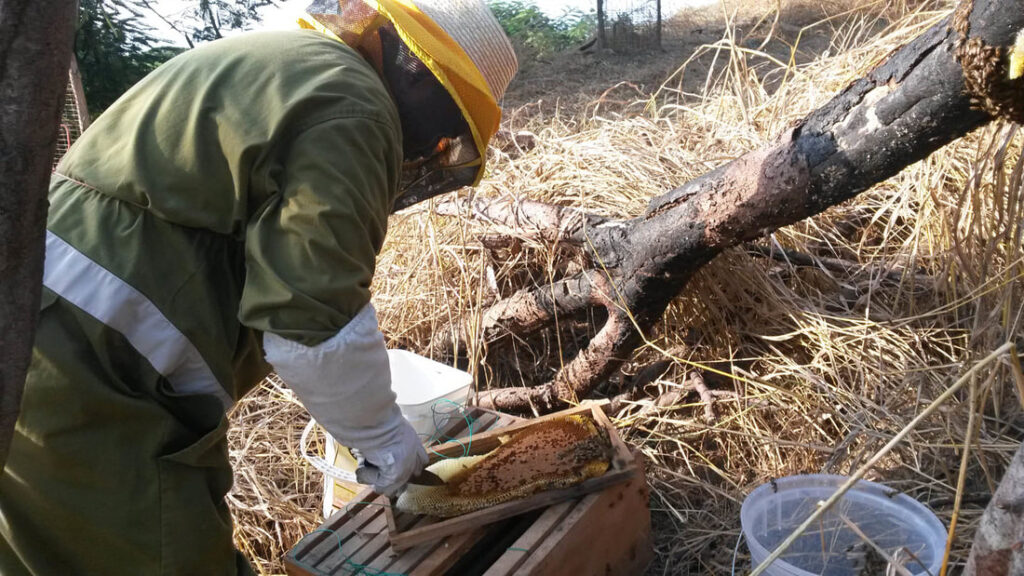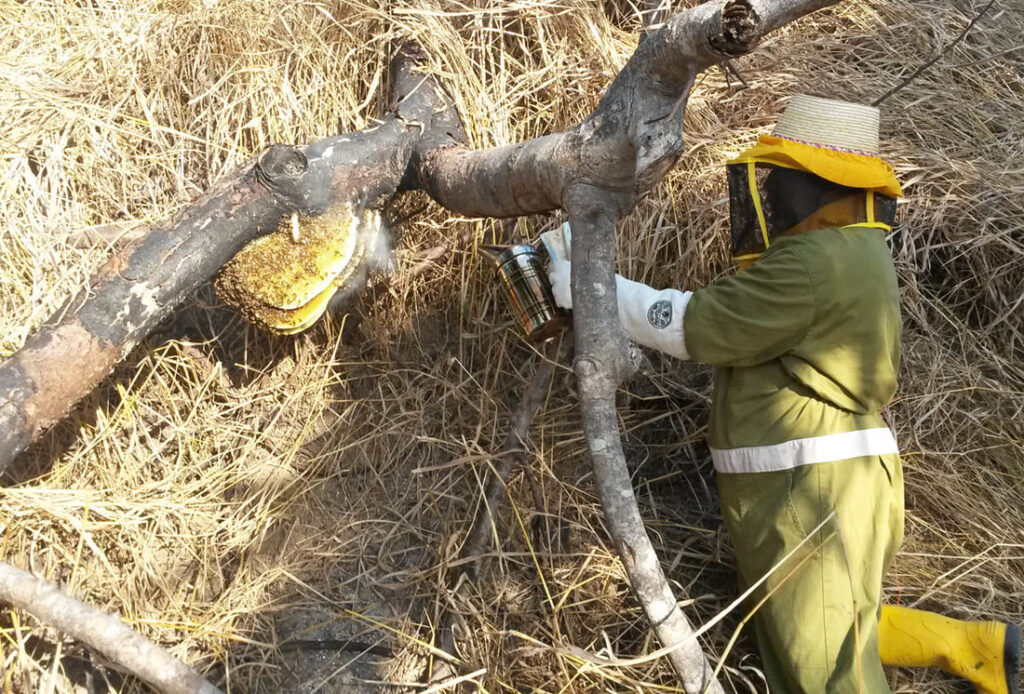
Ceibo trees in the region began flowering copiously in late May, which means there is an abundant source of pollen for the regions pollinators. It also means that there should be ample opportunities to collect seeds within a few months.
Together with our Apiculture partner Ricardo, we’ve made several wild captures of bee colonies. In many instances honey bees inhabit an area that is frequented by humans, who regard them, with good reason, as a dangerous threat. Africanized honey bees can be extremely dangerous. Often times people kill the bees (typically with toxic chemicals) to eliminate them. Fortunately, there is an alternative as we are now equipped with the proper gear to capture wild bee colonies.
The colony is collected into a bee box, where they are secured and transported to a new location. The colony survives, and they will no longer be problematic to people.




Friends in the area have been contacting us recently about removing bee colonies and we happily assist because it reduces pesticide use in the area and provides more bees at Ricardo’s farm producing honey. We currently have 4 established bee colonies at the farm and look forward to having at least 8 by the end of the year.
Project coordinators from the UN Small Donations Program have visited our project several times recently to monitor our progress and conduct film interviews for regional ecological projects’ promotional materials.


Text and photos by Clay Plager-Unger.

Reader Interactions